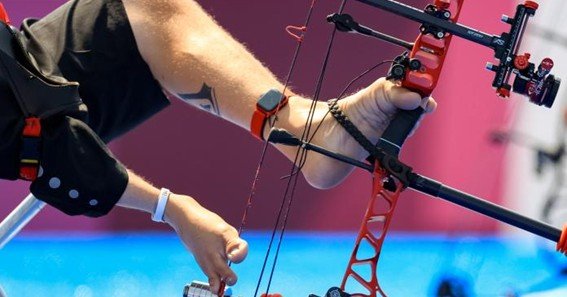If you’ve ever wondered what is ft in archery, you’re not alone. In archery contexts, “ft” often appears in scorecards, equipment specs, or data logs, and it can refer to two distinct concepts: the imperial unit foot (abbreviated ft) and the archery‑specific metric Flying Time (often shown as FT) when using a chronometer. This article unpacks both meanings, explains how they’re used, and shows you how to work with these measurements in your shooting practice.
What Is “ft” in Archery?
The Foot (ft) as a Unit of Distance
In archery, distances to targets, shooting lines, and range markings are frequently measured in feet (ft). One foot equals 12 inches or exactly 0.3048 m, and it’s commonly abbreviated as “ft”. For example:
-
A backyard practice target might be set at 20 ft (≈ 6.1 m).
-
Indoor competitions often use distances of 18 m (≈ 59 ft).
Knowing how to convert between feet and meters is essential if you practice both indoor (metric) and outdoor (imperial) archery formats.
What Is “FT” in Archery?
Flying Time (FT) Measured by Chronometer
Beyond distance, advanced archers sometimes record Flying Time (FT)—the interval an arrow spends in flight—from release until it hits the target. A chronometer equipped with two sensors measures this in seconds. In archery research and high‑precision tuning, “FT” can reveal:
-
Arrow Speed: Combined with known distance, FT lets you calculate average arrow velocity.
-
Equipment Tuning: Small changes in bow setup or arrow spine can alter FT, observable in successive timing trials.
-
Comparative Testing: Archers compare FT data across arrow types or rest configurations to optimize performance.
How to Apply “ft” and “FT” in Practice
-
Setting Up Distances in ft:
-
Measure shooting lanes using a tape marked in feet.
-
Convert meters to feet when necessary:
distance (ft)=distance (m)×3.28084 \text{distance (ft)} = \text{distance (m)} \times 3.28084
-
-
Recording Flying Time (FT):
-
Position the chronometer sensors at release point and target face.
-
Ensure consistent aim and shooting form to get reliable FT readings.
-
Calculate average arrow speed:
Speed (fps)=Distance (ft)FT (s) \text{Speed (fps)} = \frac{\text{Distance (ft)}}{\text{FT (s)}}
-
-
Analyzing Results:
-
Compare fps values to manufacturer specs or community benchmarks.
-
Use FT data to fine‑tune arrow spine, point weight, and nocking height for optimal flight.
-
FAQ
-
Q: What does “ft” stand for in archery paperwork?
A: It is the abbreviation for the foot, an imperial unit of length equal to 12 inches or 0.3048 m, used to specify shooting distances. -
Q: What does “FT” mean when reading chronometer data?
A: “FT” denotes Flying Time—the time in seconds an arrow remains airborne between release and impact, measured by a chronometer. -
Q: Why measure Flying Time (FT)?
A: FT helps archers determine actual arrow speed and consistency, allowing precision tuning of equipment and comparison across arrow setups. -
Q: How do I convert shooting distance from meters to ft?
A: Multiply the metric distance by 3.28084. For example, 30 m × 3.28084 = 98.43 ft. -
Q: Is knowing FT essential for recreational archers?
A: While not critical for casual shooting, FT and fps metrics benefit competitive archers and equipment testers seeking every performance edge.










